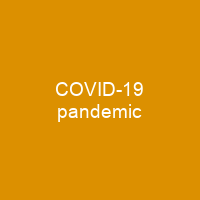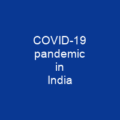Understanding the Pandemic: A Global Crisis
The COVID-19 pandemic began in Wuhan, China, in December 2019, spreading globally by early 2020. It quickly became a defining moment of our time, reshaping societies and economies worldwide. The World Health Organization (WHO) declared it a public health emergency on January 30, 2020, and officially labeled it a pandemic on March 11, 2020. This marked the beginning of an unprecedented global challenge that would test our resilience and cooperation.
Impact on Health and Society
The symptoms of COVID-19 include fever, cough, and fatigue, with transmission through airborne particles. Vaccines were developed and deployed in 2020, offering a glimmer of hope amidst the chaos. However, the pandemic caused severe social and economic disruption, including travel restrictions, lockdowns, and supply shortages. Educational institutions and public areas were closed, and many events were cancelled or postponed.
Global Disruption
The pandemic raised issues of racial and geographic discrimination, health equity, and individual rights. The World Health Organization (WHO) ended the public health emergency on May 5, 2023, but the disease continued to circulate. As of November 24, 2024, COVID-19 had caused 7,075,455 confirmed deaths, ranking it as the fifth-deadliest pandemic or epidemic in history.
Scientific Insights and Variants
The virus is closely related to bat coronaviruses and pangolin coronaviruses. The first outbreak in mainland China started in Wuhan, Hubei, China, in December 2019. Official ‘case’ counts refer to people tested for COVID-19 with positive test results. Studies have found that total infections exceed reported case counts due to sampling bias.
The strongest risk factors for severe illness are obesity, diabetes complications, anxiety disorders, and multiple conditions. Young people may not be less likely to be infected or develop symptoms. Preliminary studies have found rates of positive antibody tests indicating more infections than reported. Initial estimates of the basic reproduction number (R0) were between 1.4 and 2.5, but a subsequent analysis claimed that it may be about 5.7 (with a 95 per cent confidence interval of 3.8 to 8.9).
Emerging Variants
In December 2021, the number of cases continued to climb due to several factors. As of 28 December, 282,790,822 individuals worldwide had been confirmed as infected. By April 2022, over 500 million cases were confirmed globally. Most cases are unconfirmed, with estimates suggesting the true number is in the billions.
The test positivity rate was used to monitor the pandemic and guide decision-making, with a benchmark of 5% considered ‘too high.’ As of March 2023, more than 6.88 million deaths had been attributed to COVID-19. The actual death toll may be higher due to underreporting.
Vaccines and Treatments
A COVID-19 vaccine is intended to provide acquired immunity against SARS-CoV-2. Prior to the pandemic, an established body of knowledge existed about coronaviruses causing diseases like severe acute respiratory syndrome (SARS) and Middle East respiratory syndrome (MERS). The initial focus of SARS-CoV-2 vaccines was on preventing symptomatic and severe illness.
As of March 2023, more than 5.5 billion people had received one or more doses in over 197 countries. According to a June 2022 study, COVID-19 vaccines prevented an additional 14.4 million to 19.8 million deaths in 185 countries and territories from 8 December 2020 to 8 December 2021.
Global Distribution
The Oxford-AstraZeneca vaccine was the most widely used, with the Novavax’s booster Nuvaxovid receiving authorization for use in adults in the United Kingdom on 8 November 2022. The WHO released its Global Vaccine Market Report on 12 November 2022, highlighting unequal distribution of vaccines and struggles by economically weak countries to obtain them.
Strategies and Containment
The disease is mainly transmitted via the respiratory route when people inhale droplets and small airborne particles that infected people exhale as they breathe, talk, cough, sneeze, or sing. Infected people are more likely to transmit COVID-19 when they are physically close to other non-infected individuals.
Preventive measures include getting vaccinated, staying at home or spending more time outdoors, avoiding crowded places, keeping distance from others, and wearing a mask in public. Treatment for COVID-19 includes supportive care for mild cases (medication, rest, hydration), oxygen support and prone positioning for severe cases, mechanical ventilation and ECMO for respiratory failure.
Long-term Effects
Existing drugs such as hydroxychloroquine, lopinavir/ritonavir, and ivermectin are not recommended by health authorities due to lack of evidence. Prognosis varies, with some cases mild and others severe, causing hospitalization. Mild cases typically recover within two weeks, while those with severe or critical diseases may take three to six weeks.
Long COVID, a condition characterized by long-term consequences persisting after the typical convalescence period, affects between 5% and 50% of patients. Strategies to control outbreaks include elimination (zero-COVID) and mitigation (flattening the curve), with experts predicting that the coronavirus will become endemic.
Conclusion
The COVID-19 pandemic has been a defining moment in modern history, reshaping our world in profound ways. From health crises to economic disruptions, it has tested our resilience and forced us to adapt. As we move forward, the lessons learned from this global challenge will continue to shape our future.

You want to know more about COVID-19 pandemic?
This page is based on the article COVID-19 pandemic published in Wikipedia (retrieved on November 27, 2024) and was automatically summarized using artificial intelligence.







